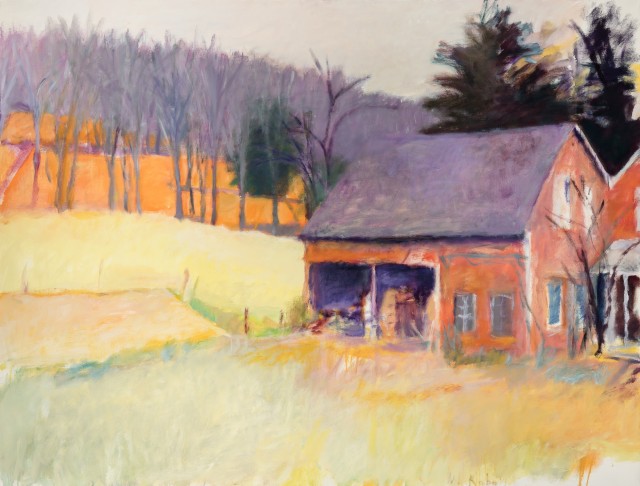Wolf Kahn and the Dynamics of Color
09/08/2020 Old Master Paintings

NEW YORK, NY -- Wolf Kahn’s brushwork is richly textured, whether his palette is monochromatic, as in most of his paintings from the 1960s, or vividly high-keyed, as in his late landscapes. The powerful feeling of physical presence in his work is one of the sources of its appeal. This tactile quality might lead one to suppose that his technique was essentially instinctual; but that impression would be mistaken.
Some years ago it was my pleasure to work closely with Wolf Kahn on several books about his life and work, which gave me an opportunity to hear his thoughts about his art. I quickly learned that, as opulent as his paintings can be, his approach to composing them was fundamentally intellectual. He loved thinking about painting. Each of his works was an exercise in thoughtful composition, and he loved talking about that process.
He was particularly fascinated by the forces that could be set in motion with color. He recalled his time studying with the Modernist master Hans Hofmann, and spoke with admiration of Hofmann’s “push-pull” theory – the idea that an artist can build visual space within a painting not only by carefully laying out its forms and but also by deploying blocks of warm and cool color. As the cool colors appear to recede and the warm colors come forward, their interacting “push” and “pull” create a visual impression of depth. Although Kahn’s lyrical representational images look almost nothing like Hofmann’s hard-edged abstractions, the drama of that space-creating illusion is a force that their paintings share.
The two landscapes by Wolf Kahn in Doyle's Important Paintings auction on September 17, 2020 were both painted in the early 1970s, not long after the artist’s palette had shifted from the monochromatic tonality of his early maturity to the brighter, more varied colors of his later work. Both are scenes near the farm in Vermont where Kahn and his wife, the abstract painter Emily Mason, customarily worked during the summer and autumn.
In Sunny November, circa 1972, the landscape is dominated by the warm red-orange hulk of a barn, whose gray roof recedes and seems to fuse into a distant ridge of leafless trees – painted in the same gray as the roof. In the visual space between these two areas of cool gray there lies an orange meadow and farm buildings in the middle distance and, closer, a bright yellow meadow. These two emphatic, warm-hued areas seem to move toward us, checked only by a palisade of bare trees set between them. In the foreground, those same oranges and yellows appear again, blending into a variegated color field that underlies the barn. This is classic Wolf Kahn: carefully composed, brilliantly colored, and full of chromatic force.
In Wet November, 1973, we see what appears to be the same landscape, now played in a different key. Here the viewpoint has been moved closer to the distant ridge; we seem to be standing near the slope of the orange meadow, which here surges forward into the foreground and dissolves into yellow. The architectural anchor of this picture is a pale gray shed in the left middle-ground, and the gray palisade of trees separating the two meadows that we saw in Sunny November is now only a short distance away. Whereas Sunny November seems to hold itself in reserve, with its dynamics contained within it, here the back-and-forth chromatic forces at work draw us in, as if we could walk into the landscape. The powerful feeling of space and movement that we saw in Sunny November is equally present here.
These paintings offer two telling examples of Wolf Kahn’s use of color in his analytical approach to composition, which was an essential component of his art.
Important Paintings
Among the highlights of the September 17 auction of Important Paintings are Sunny November and Wet November by Wolf Kahn.